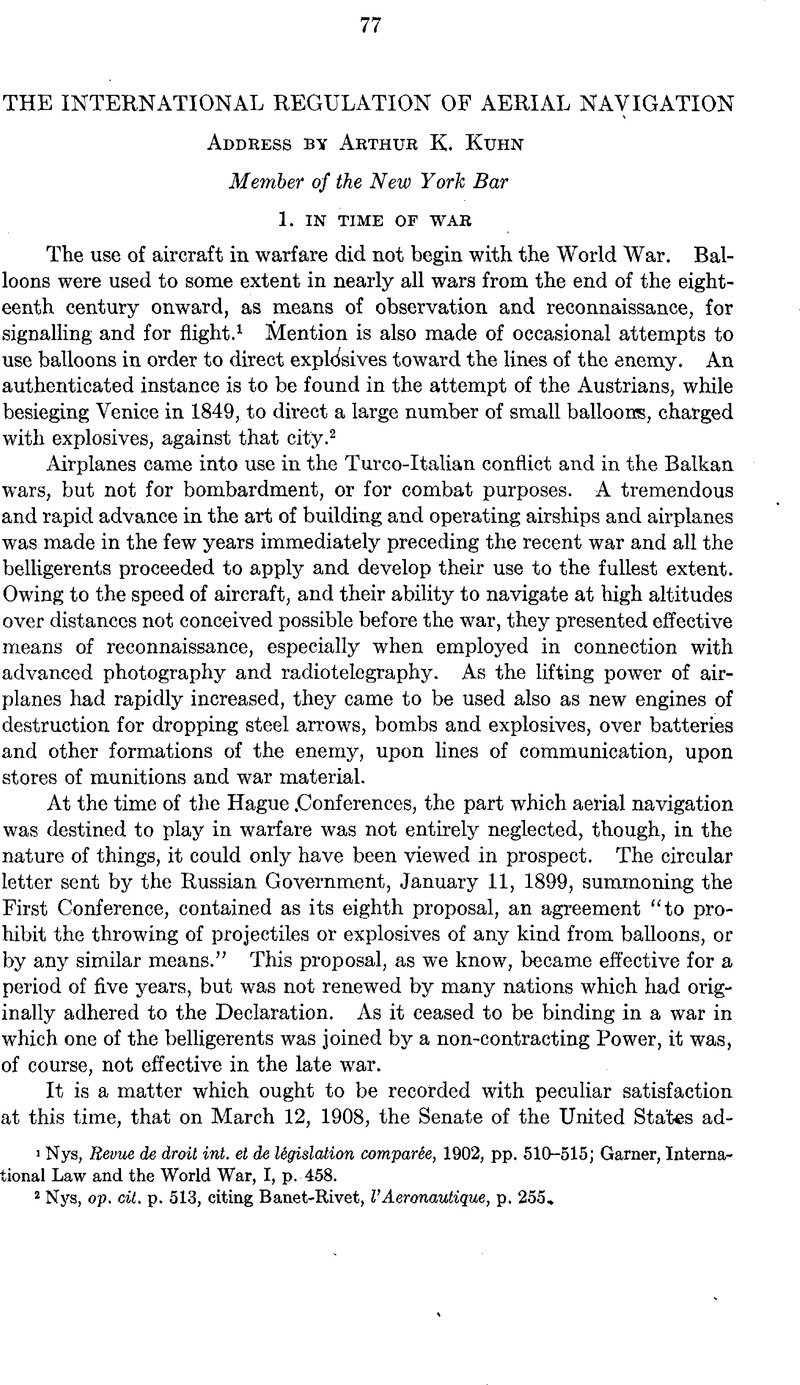No CrossRef data available.
Article contents
The International Regulation of Aerial Navigation
Published online by Cambridge University Press: 27 February 2017
Abstract

- Type
- Third Session
- Information
- Copyright
- Copyright © American Society of International Law 1921
References
1 Nys, Revue de droit int. et de législation comparée, 1902, pp. 510-515; Garner, International Law and the World War, I, p. 458.
2 Nys, op. cil. p. 513, citing Banet-Rivet, I'Aeronautique, p. 255.
3 See Scott, The Hague Peace Conferences of 1899 and 1907, II, p. 527, n.
4 Regulations respecting the Laws and Customs of War on Land, Art. 27.
5 Gamer, op. cit., I, p. 501.
6 Spaight, Aircraft in War, p. 16. See also British Manual of Land Warfare, sec. 119.
7 Am. Jour. Int. Law, Supplement, X, p. 190.
8 Westlake pointed out before 1914 that one of the chief principles to be observed in any improvement of the laws of war was “the extension of the list of absolute prohibitions so that methods of warfare which are still approved or faintly condemned may gradually be brought under a ban“; especially “when the suffering that must result is out of any reasonable proportion to the military advantage promised.” Collected Papers, p. 281.
9 “International Aerial Navigation and the Peace Conference,” Am. Jour, Int. Law, July, 1920, p. 369.
10 9 George V, chap. 3.
11 U. S. Revised Statutes 4405; ”… . and such regulations, when approved by the Secretary of the Treasury, shall have the force of law.“
12 Report of the Portsmouth Conference of the International Law Association, 1920, pp. 424-425:




